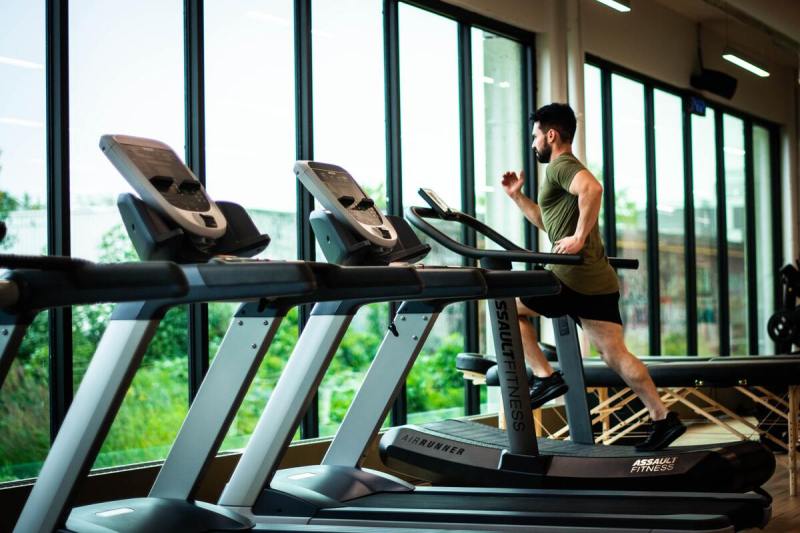You only have so much time when you go to the gym, and you want to make sure each minute counts. That means focusing on the gym equipment and exercises that are going to get you the results you’re looking for. And, well, we’re here to tell you that some exercises and gym equipment may not be as effective or beneficial as others.
What machines is it okay to skip? What exercises do you not have to feel bad about ditching? And what should you be replacing them with? We’ve got you covered. The best part is most replacements are simple, requiring little to no extra equipment. By making these changes, you can optimize your workouts and target specific muscle groups more effectively.

Smith machine squats
The Smith machine squat is a compound exercise that primarily targets the quadriceps, hamstrings, and glutes. However, using the Smith machine can limit your natural movement pattern and restrict the activation of stabilizing muscles. To overcome these limitations, it is recommended to replace Smith machine squats with barbell back squats.
Do this instead: barbell back squats
Barbell back squats are one of the best glute exercises for men. They allow for a greater range of motion and engage more muscle groups, including the core and lower back. They are more difficult, resulting in additional gains, and they also challenge your balance and require greater coordination.
Instructions
- Start by placing the barbell on your upper back and resting it on your traps or rear deltoids.
- Stand with your feet shoulder-width apart and toes slightly pointed out.
- Lower your body by bending at the knees and hips, keeping your chest up and back straight.
- Continue descending until your thighs are parallel to the ground or lower, ensuring your knees don’t extend past your toes.
- Push through your heels to return to the starting position, fully extending your hips and knees.

Donkey kicks
Donkey kicks are an isolation exercise primarily targeting the glutes, popular for requiring no equipment. The biggest problem with this exercise is that only the glute muscle is used in the motion, and it has no resistance.
Do this instead: barbell hip thrusts
Barbell hip thrusts allow you to add much more resistance to the movement, resulting in greater muscle activation and quicker glute development — weight training is almost always better than working without weights. This exercise also engages the hamstrings and other muscles for a more rounded workout.
Instructions
- Start by sitting on the ground with your back against a bench, knees bent, and feet flat on the floor.
- Place a barbell across your lap, just above your hips, and hold it securely.
- Drive your hips upward by pushing through your heels, focusing on squeezing your glutes at the top of the movement.
- Lower your hips back down to the starting position in a controlled manner, and repeat for the desired number of repetitions.
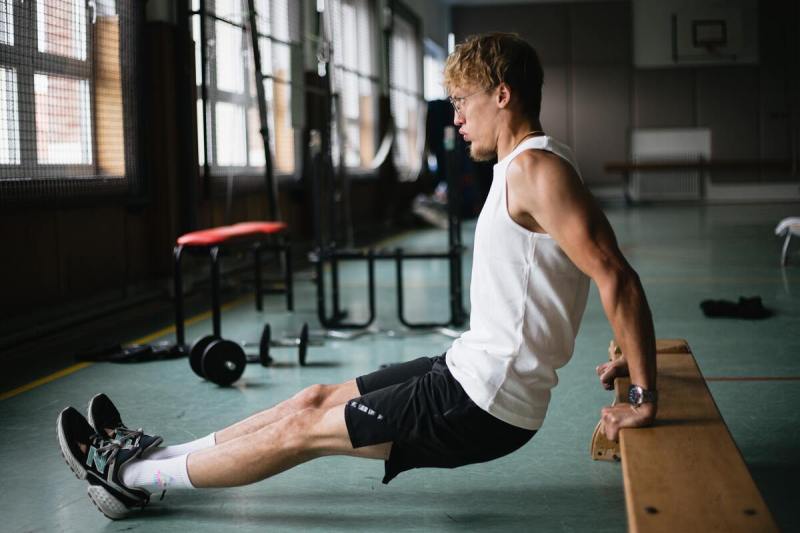
Overhead tricep extensions
Overhead tricep extensions are a popular exercise for targeting the triceps. However, they can sometimes be challenging to perform correctly, and improper form can limit their effectiveness. Even having your elbows too far out can change the movement to one that is less effective and could even lead to injury.
Do this instead: weighted dips
Weighted dips are a compound exercise that primarily targets the triceps while also engaging the chest and shoulders. They offer a more natural range of motion and are usually more effective at building muscle.
Instructions
- Grab onto parallel bars with your hands slightly wider than shoulder-width apart, palms facing inward.
- Raise yourself up and straighten your arms, ensuring your elbows are locked.
- Lower your body by bending your elbows until your upper arms are parallel to the floor or slightly below.
- Push yourself back up to the starting position by extending your arms fully.
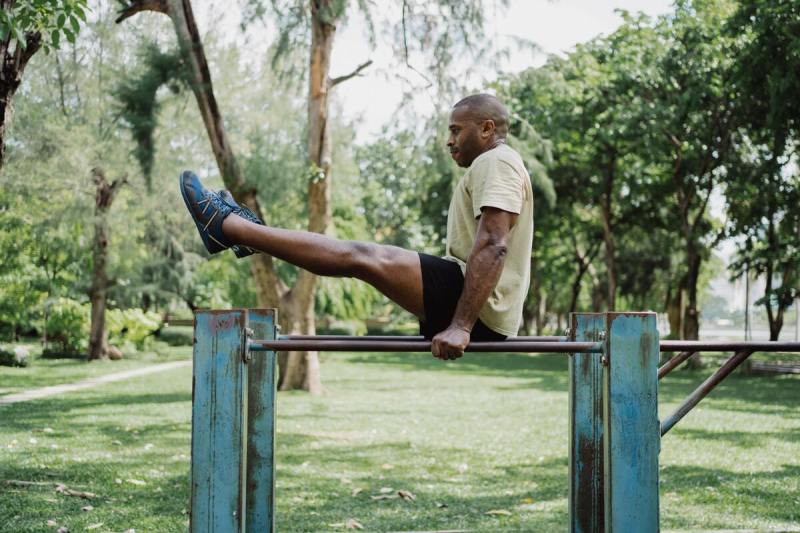
Reverse crunches
Reverse crunches primarily target the lower abs, but they may not provide enough resistance for optimal muscle development. Many people actually find them easy, which means they’re not causing you to do very much work, which in turn means you’re not getting those gains. Instead of replacing them, though, you can try adding weight to turn reverse crunches into a real exercise.
Do this instead: hanging leg raises
Hanging leg raises target the entire abdominal region, including the lower abs, while also engaging the hip flexors and grip strength. They offer increased resistance and challenge the core muscles more effectively.
Instructions
- Hang from a pull-up bar with an overhand grip, ensuring your arms are fully extended.
- Keep your legs straight and raise them upward by flexing your hips and bending your knees.
- Continue lifting until your thighs are parallel to the floor or higher.
- Slowly lower your legs back to the starting position in a controlled manner, and repeat for the desired number of repetitions.
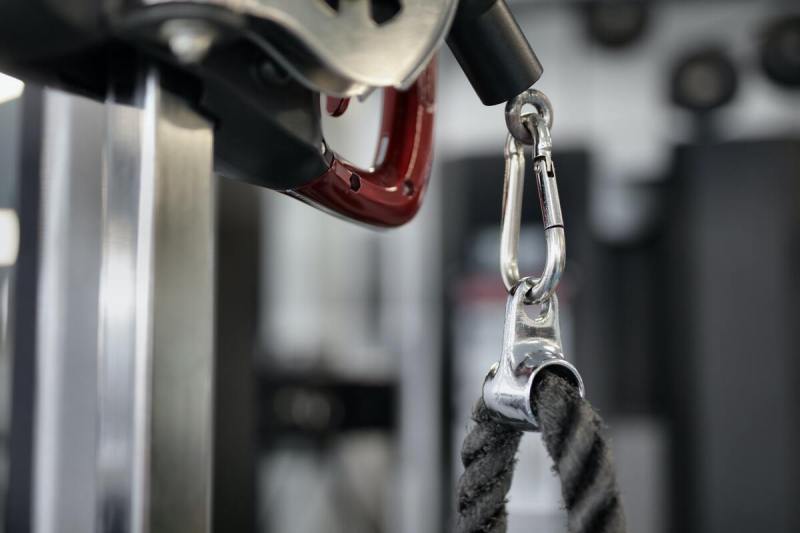
Hip abduction machine
The hip abduction machine is commonly used to target the outer thigh and glute muscles. However, its limited range of motion may not fully engage the desired muscles. It also lacks customization; the machine is always set to one level.
Do this instead: cable hip abductions
Cable hip abductions allow for greater customization of the exercise as you can adjust the height and angle of the cable attachment. This variation of the exercise also engages additional muscles, such as the hip stabilizers.
Instructions
- Attach an ankle cuff to a cable machine and secure it around your ankle.
- Stand perpendicular to the cable machine with the cuffed leg furthest from the machine.
- Start with your cuffed leg closer to the machine and cross your other leg over it for stability.
- Keeping your leg straight, move it away from your body against the resistance of the cable, targeting the outer thigh.
- Return to the starting position in a controlled manner, and repeat for the desired number of repetitions on each leg.
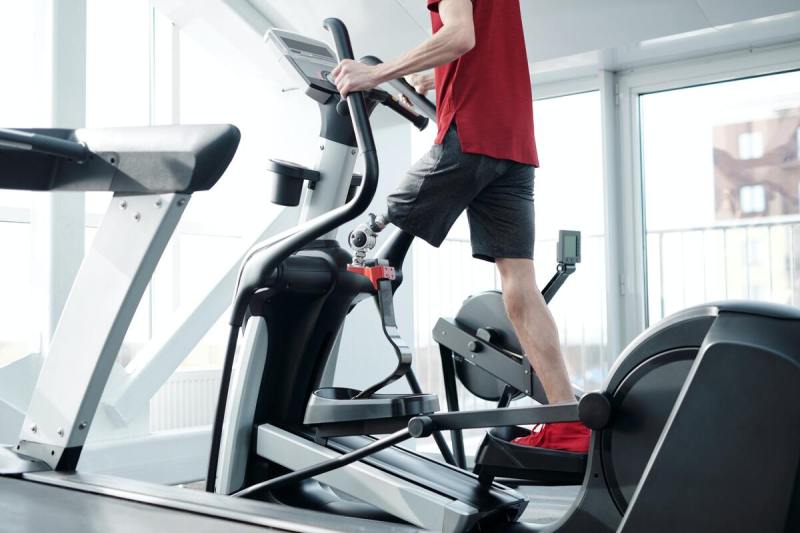
Elliptical
The elliptical machine is often chosen for cardio workouts, but it may not provide sufficient challenge or variety in movement. It’s better for a warm-up than for actually burning calories.
Do this instead: treadmill
The treadmill offers a range of options, including walking, running, incline walking, and sprints. These variations allow you to increase your heart rate more effectively and provide a greater challenge to your muscles. You can also try actually walking outside, like going hiking in the mountains or even trail running.
Instructions
- Set the desired speed and incline level on the treadmill.
- Start by walking or jogging at a comfortable pace for a warm-up.
- Gradually increase your speed or incline to elevate your heart rate and intensify the workout.
- You can also incorporate intervals by alternating between periods of higher intensity (running or faster walking) and lower intensity (jogging or slower walking).
- Cool down by gradually reducing the speed and incline, and end with some stretching exercises.
